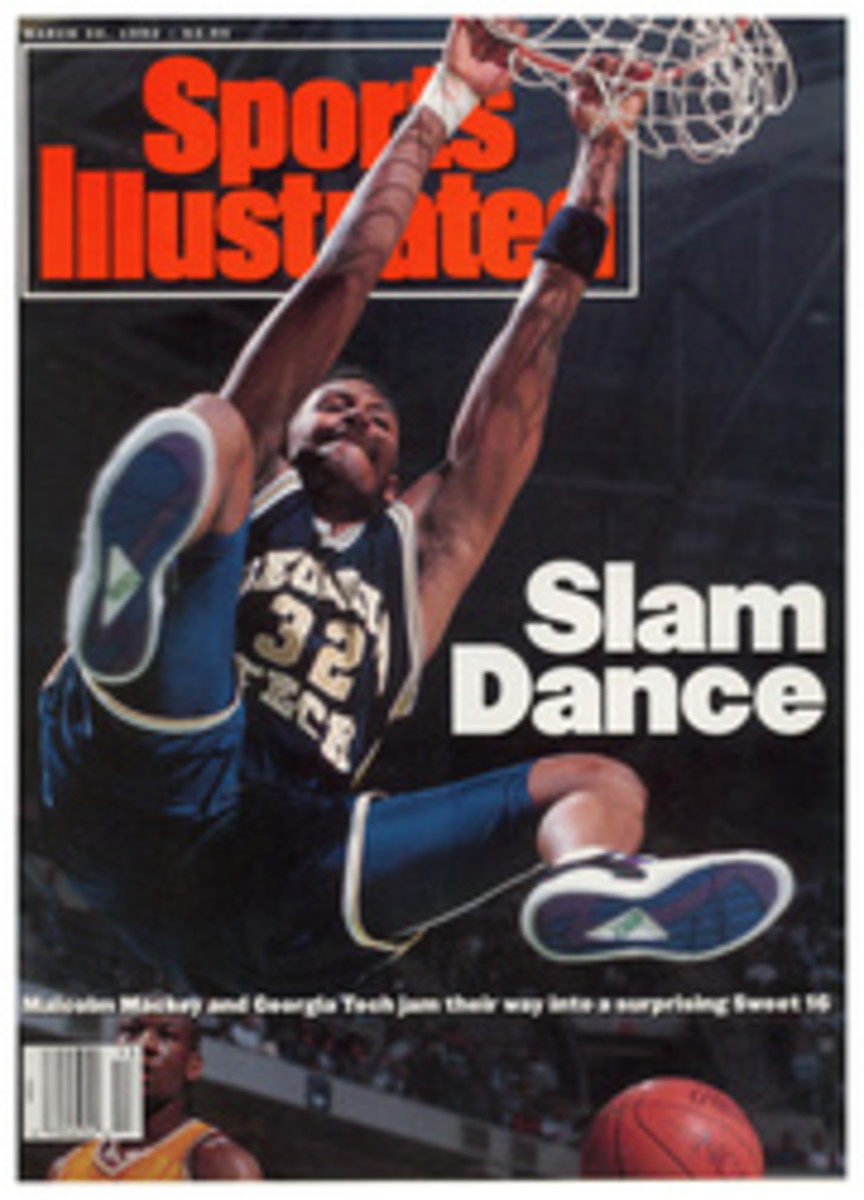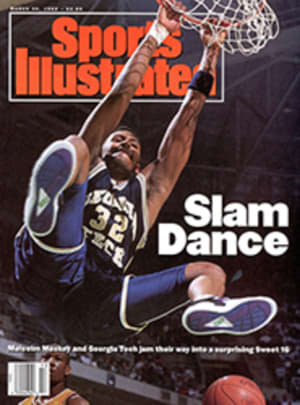
Tribe Of the Future
When you have 105 losses to brag about, you had better have a gimmick. So the Cleveland Indians opened their 1991 highlight video with a scene from the Frank Capra classic It's a Wonderful Life. There's Jimmy Stewart, snow swirling around him, staring down from the rail of a bridge into churning waters, ready to jump. And when the camera pans back to Stewart, there's...Mike Hargrove.
Hargrove, the Cleveland manager, prepares to jump, depressed about what an awful season the Indians had last year. As if that weren't enough to make Capra do a 180 in his grave, the angel who comes to Hargrove's rescue is quite possibly the worst actor in history. He is also a Hall of Fame pitcher who spent 18 years with Cleveland. "Don't jump, Mike," says Bob Feller in his best monotone. "If you jump off the bridge now, you'll regret it."
The video kicked off a clever off-season for the Indians, who are the talk of this profligate sport after signing many of their young, pre-salary-arbitration-eligible players to three-and four-year contracts. Tired of the capriciousness of arbitration, to which players can take their contract beefs after three years in the big leagues, and weary of the undue influence of free-spending larger-market clubs on the salary scale, the Indians initiated a new strategy for rebuilding the team: They dumped their three top earners—pitchers Tom Candiotti, Greg Swindell and Doug Jones—by December, and then identified a nucleus of 13 young players and went about signing them.
This, the Cleveland management reasoned, would build camaraderie and security in a clubhouse that previously had a revolving door. It would also give the fans a core group of players to bond with and would alleviate the painful process of negotiating large-market-based contracts for a club that has one of the major leagues' smaller TV markets and worst attendance figures. In negotiations with some agents with tough reputations, the Indians got a dozen deals done in a five-week frenzy that ended on March 12. Talks are continuing with the 13th player, slugging outfielder Albert Belle.
While there's still some roster tinkering to do as the Indians wind up the exhibition season in Tucson, the young players general manager John Hart has assembled in the desert are basically the Tribe of the '90s. If centerfielder Kenny Lofton and shortstop Mark Lewis win starting jobs, as expected, the only Cleveland starter over 25 will be outfielder and designated hitter Glenallen Hill, who's all of 27. And no player on the team is making $1 million this year; shortstop Felix Fermin is the highest paid, at $950,000.
The deal-takers were catcher Sandy Alomar Jr.; second baseman Carlos Baerga; outfielders Alex Cole, Mark Whiten and Hill; starting pitchers Charles Nagy, Jack Armstrong, Scott Scudder, Dave Otto, Dennis Cook and Rod Nichols; and reliever Steve Olin. "If these guys turn out to be——," director of player development Dan O'Dowd says, "we're the idiots. But this is the only way we had a chance to build a great team."
O'Dowd and Hart hatched the plan 13 months ago, while flying from Cleveland to Chicago for Candiotti's arbitration hearing (the two sides settled on a $2.5 million contract). "We've got to figure out a better way," Hart said on the plane. Over the next nine months, Hart conceived the strategy to avoid arbitration and help plan his budget for the future.
One night last week, Hart turned a casual dinner conversation into a three-hour revival meeting on the merits of Cleveland's plan and the evil impact of big-market baseball on small-revenue clubs. Said Hart, "The issue was, How does a small-revenue team today win a pennant and hope to retain its players or remain competitive? First we had to build up the farm system. Then we had to devise a plan once the players got to Cleveland. Arbitration doesn't work for us—it kills our salary structure, and it puts a wedge between management and players—and free agency doesn't work for us. We had to stop making Cleveland the pit stop between nowhere and somewhere in baseball. We had to commit to our fans, and we had to commit to the players, to convince them we were trying to build something solid here.
"I want everyone in the industry to know it was our only chance. When I asked [Toronto general manager] Pat Gillick how he could sign Jack Morris for such huge dollars [$10.85 million for two years], he told me, 'This is our market.' Same thing here. I'm in a box. This is our market. And these are not stiffs. These are good prospects."
The players had trouble giving up their arbitration rights, especially those with great confidence in their abilities. "I had some sleepless nights," says Cook, a former Giant, Phillie and Dodger lefthander who would have been eligible for arbitration next winter. He signed for three years at roughly $2.3 million, plus performance incentives. "You battle for your arbitration rights, and they want you to give them up. But the Indians were very fair with all of us, and you've got to figure they're taking a chance too."
"I figure I might lose $300,000, $400,000 with this contract if I do really well," says Baerga, a .288 hitter last year whose new four-year deal will pay him $6.9 million ($500,000 in '92, then $1.2 million, $2.2 million and $3 million). "If I hit .330 or knock in 110 runs, I'll say, 'Oh, my god! What have I done?' But that's my risk. I accept it. And this gives me the security to just go out and play ball."
The potential downside to Hart's actions? He gave financial security to mostly unproved players who might turn out to be major league busts. For example, how could he have so much confidence in seven pitchers who were a combined 31-62 with a 4.17 ERA last year? Says Houston Astro general manager Bill Wood, who has talent and market problems of his own, "The way we're doing it contractually, a year at time, is more expensive. But we feel players play best on a year-to-year basis, with no guarantees for the future."
Wood brings up the biggest socioeconomic argument of this sports generation: Are hungry players better players? Or do young players play better when they're not thinking about their next contract?
Armstrong, for one, should be an interesting laboratory rat in this experiment. Acquired from Cincinnati, where he had earned a decidedly different-drummer reputation, Armstrong went from being the starting pitcher for the National League in the 1990 All-Star Game to 7-13 with a 5.48 ERA in '91. In November the Reds peddled Armstrong and Scudder to Cleveland for Swindell, a quality starter the Indians decided they couldn't afford to keep. Hart gave Armstrong a three-year, $2.9 million deal with some $800,000 in performance incentives over the life of the contract.
Last Friday in Tucson, Armstrong sat in the Indians dugout. The sky was sunny and cloudless, as was Armstrong's mood. "In baseball, you can't try too hard, and that's what I was doing," he said. "Last year I was always pitching with a hidden agenda, trying to justify the year I'd had in 1990 and trying to pitch for my [financial] future. Now, with the deal I signed, I can pitch with no emotional baggage. The peace of mind is invaluable."
It all sounds terrific and looks good on paper—for now. "I can look you straight in the eye and tell you there's hope in Cleveland," Hart says.
"The money's not top, top dollar," says Alomar, whose four-year deal totals $7.3 million ($500,000 in '92, then $1.3 million, $2.2 million and $3.3 million). "But it is fair, and I feel like they're trying to put something good together here. Besides, money isn't everything, you know."
Hope in Cleveland? Money's not everything? In baseball? It's a wonderful life, indeed.
PHOTO
ROBERT BECK
Cleveland's biggest catch was Alomar, who signed a four-year, $7.3 million contract.
PHOTO
ROBERT BECK
With peace of mind, Armstrong hopes his future in Cleveland will be a bright one.

